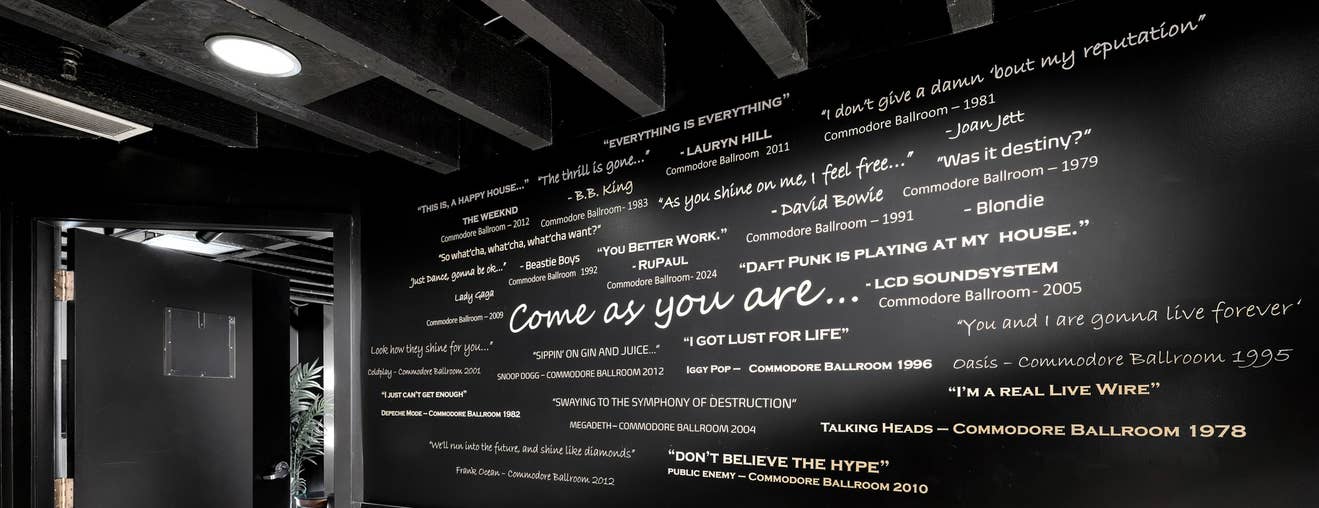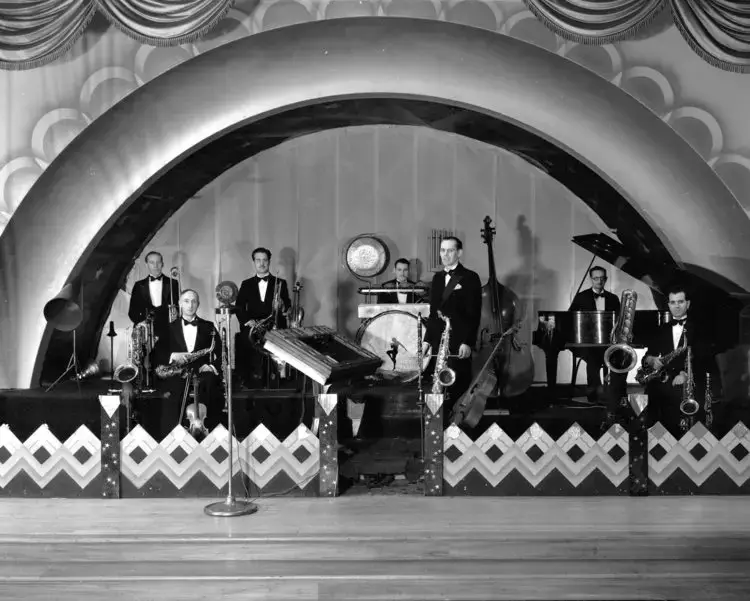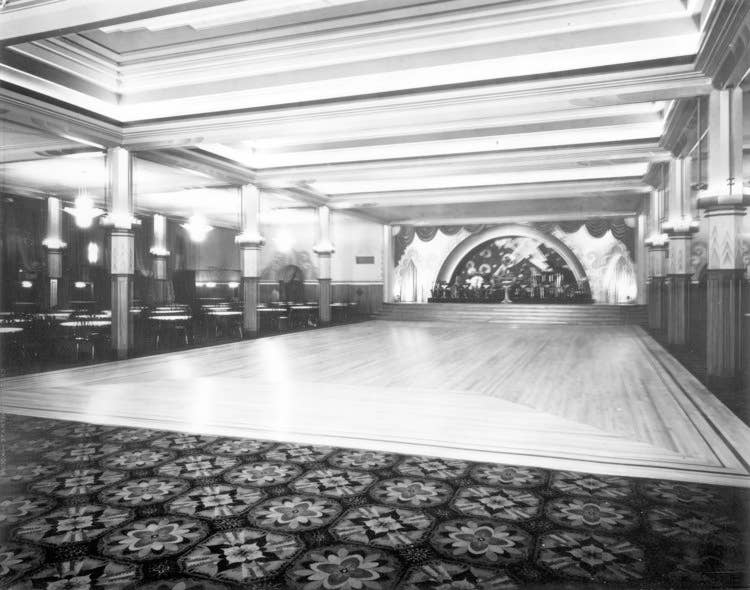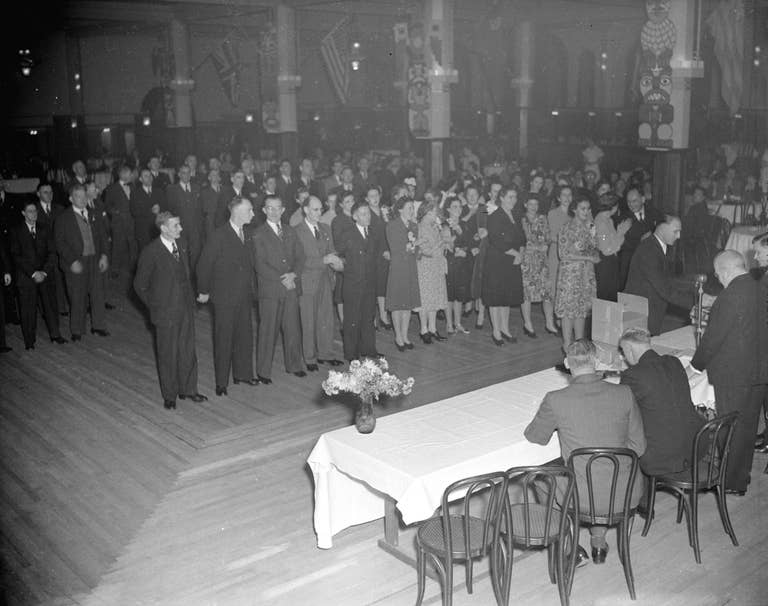
History
ABOUT
For over 90 years, the Commodore Ballroom has been synonymous with Vancouver entertainment and nightlife. Since opening its doors in 1930, the award winning ballroom has hosted music legends, celebrated historical milestones, congratulated graduating students, and has been the setting for countless romances.

Photo Courtesy of the Vancouver Archives
VANCOUVER NEEDS ANOTHER BALLROOM
The original Commodore Cabaret was built in 1929 by George Conrad Reifel. The site chosen was the Granville Street location of the Commodore Cafe.
Unfortunately, the Commodore’s opening on December 3rd 1930 came on the heels of the infamous stock market crash the year before – and the Commodore closed in March 1931. Managing directors Nick Kogas and Johnny Dillias re-opened the room later that year, featuring dinner and dancing every Saturday night with an admission of $1 per person, and for the balance of the week, rented the room.
For more than 30 years, the Commodore relied on a very successful combination of house bands, featured acts and third-party rentals to maintain its stature in the city.
HOUSE BANDS AND MUSIC LEGENDS
Over the years, the Commodore hired a succession of house bands that would play exclusively for years until one contract ended and another began. It was the era of big bands and 12-14 piece Orchestras.
Big names from out of town that drew the crowds included The Dorsey Brothers, Count Basie, George Burns, Rudy Vallee, Stan Kenton, Cab Calloway and the Will Maston Trio, including the as yet unknown Sammy Davis Jr.
DREW BURNS AND THE BALLROOM
Profits and appeal picked up significantly for the venue in 1969 when Impresario Drew Burns purchased the lease, obtained a liquor license, renovated the room and changed the name from the Commodore Cabaret to the Commodore Ballroom.
For the next 25 years, Burns made the Commodore rock! He brought in live acts of all genres -- from rock and roll, country and the blues, to punk, new wave and heavy metal. Names that graced the Commodore stage during these years included Tina Turner, Kiss, the Glenn Miller Orchestra, Dizzy Gillespie, B.B. King, David Bowie, and The Village People. Burns broke new ground by booking the first Vancouver appearances by Patti Smith, Blondie, Devo, Tom Petty, The Police and the North American debut of The Clash -- all within a few weeks of each other.
In the mid-90s, the Drew Burns vision of the Commodore Ballroom was fading. His lease expired at the end of 1995, and despite the construction of a new dance floor in January 1996, the lease went up for sale. The sale was unsuccessful and, in July 1996, the Commodore Ballroom closed its doors. The room remained empty and silent for three years until 1999. With no place quite like it in Vancouver many touring acts simply bypassed the city.
CANADA'S LEADING CONCERT VENUE
Reopening in November 1999, to the pleasure and excitement of the entire city, The Commodore Ballroom continued where Drew Burns had left off – booking the world’s leading artists, supporting local acts and renting the space for private functions.
Since reopening, the Commodore Ballroom has won countless awards recognizing its importance as a local landmark, exceptional operational efficiency and status as the city’s favourite live venue. The Commodore was named one of the Top 10 Most Influential Clubs in North America and the Most Influential Club in Canada by Billboard Magazine in 2011.
As The Commodore Ballroom enters its ninth decade, the venue is host to over 150 public events each year, entertaining over 120,000 guests annually. Locals and travelers, artists and guests continue to delight in the impressive history and ongoing commitment to the future of the Commodore Ballroom.

Photo Courtesy of the Vancouver Archives

Photo Courtesy of the Vancouver Archives

Photo Courtesy of the Vancouver Archives